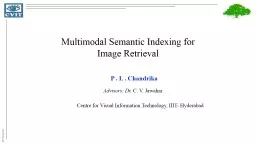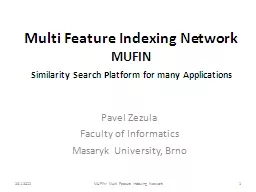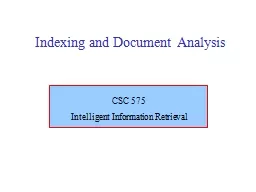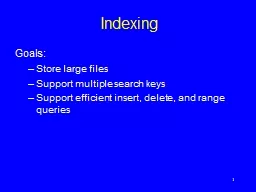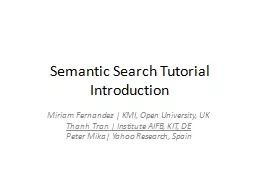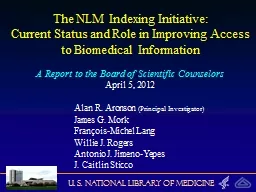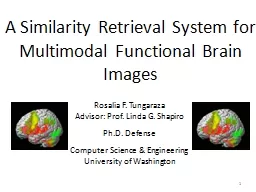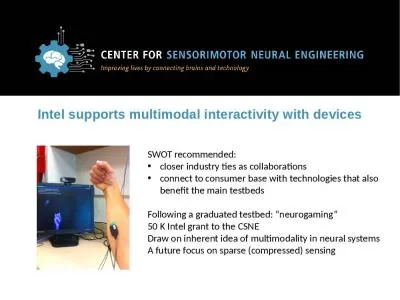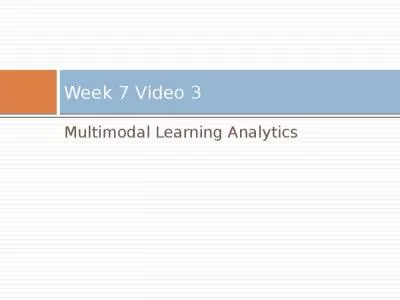PPT-Multimodal Semantic Indexing for Image Retrieval
Author : pasty-toler | Published Date : 2016-10-13
P L Chandrika Advisors Dr C V Jawahar Centre for Visual Information Technology IIIT Hyderabad Problem Setting
Presentation Embed Code
Download Presentation
Download Presentation The PPT/PDF document "Multimodal Semantic Indexing for Image R..." is the property of its rightful owner. Permission is granted to download and print the materials on this website for personal, non-commercial use only, and to display it on your personal computer provided you do not modify the materials and that you retain all copyright notices contained in the materials. By downloading content from our website, you accept the terms of this agreement.
Multimodal Semantic Indexing for Image Retrieval: Transcript
Download Rules Of Document
"Multimodal Semantic Indexing for Image Retrieval"The content belongs to its owner. You may download and print it for personal use, without modification, and keep all copyright notices. By downloading, you agree to these terms.
Related Documents

